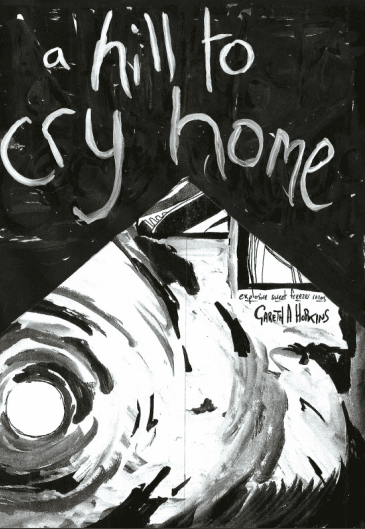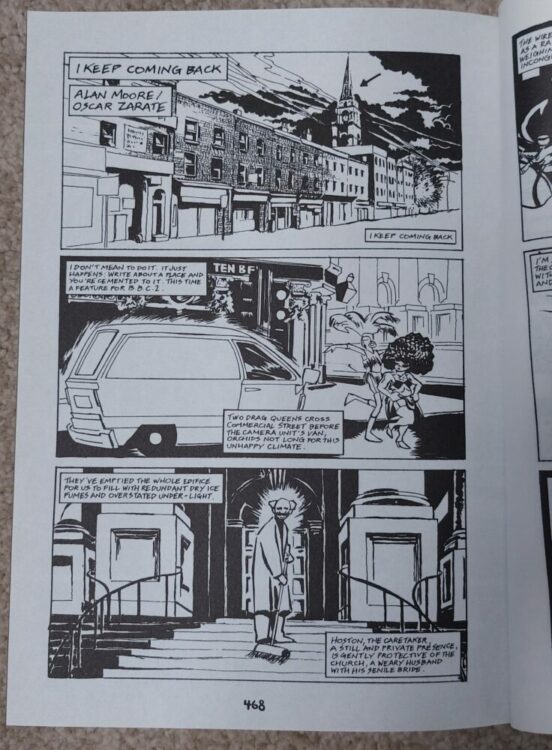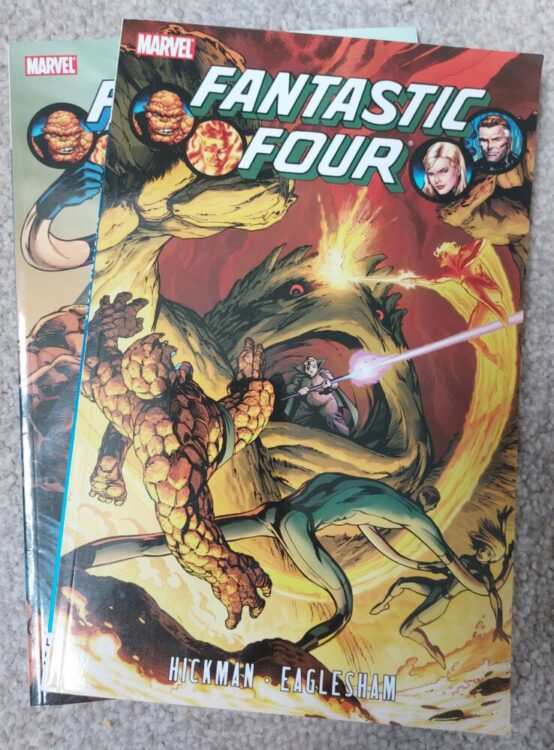The premise is simple: read one comic every day for the entire year. It seems like a simple task but there is no way that I read 365 comics last year, even if you count the individual issues in collections. So, this year, I am committing myself to this reading challenge, in the hope that I can broaden my reading habits and fully engage with my favorite hobby again.
This week has been a long week. I have been trying to get my head back in the game for some personal study but I am finding it difficult to concentrate and focus. I guess it’s that time of year. As a result, this week’s reading is all over the place and I’m not sure how much time I gave the new comics I tried to read. Probably not enough.

Comic Number 50: A Hill to Cry Home
I’m fascinated by the comics form, what you can and can’t do within the medium. Since the late 1950’s, comics in Western culture have been dominated by the superhero and what most people understand as comics today is based on a very straight forward formula of panels on a page telling a narrative. But comics can be so much more. Once, during a conversation over a drink, one of my friends said that we have only just begun to discover what comics can be and I agree with him. Over time there have been people who have pushed the envelope and experimented with the medium, people such as Chris Ware, Seth, and Melinda Gebbie. Although not as prevalent as in the Art world, there have been movements within comics, such as Underground Comix and Abstract comics.
Which leads me to Gareth A Hopkins’ A Hill to Cry Home. Last year Hopkins released a collection of abstract comics in a book called Explosive Sweet Freezer Razor. The book contains 10 very visually different short stories and this one is available free on the following website: abstractcomics.blogspot.com
One thing that this comic will do is start a conversation. The idea that a narrative is instrumental to a comic is thrown into question by abstract comics but not, perhaps, by this one. There is a narrative leading through the pages which you can piece together from the different text boxes. But what the text does is force you as a reader to look for forms and meaning within the visuals. However, whether this is a merit or a detriment to the comic is open for debate, one that has led me down an internet wormhole of blog pages and research articles.

Comic Number: 51: Fantastic Four #570
Speaking of high concepts.. Jonathan Hickman’s run on Fantastic Four is as high concept as modern superhero comics get (I’m sure that people will have opinions on that and any recommendations for alternatives are greatly welcome).
This issue is the one that starts Hickman’s journey through the “worlds greatest comic magazine” and immediately introduces a number of narrative elements that will pop up across the entire run. There is Reed’s relationship with his father; the introduction of Bentley, the Wizard’s son; and the Council of Reeds. Hickman packs so much into each issue. But the highlight is that the comic is focused, at every step, on the family. First and foremost is the Fantastic Four themselves, but this is an extended family and the concept of ‘family’ in greater terms.
I can’t always put my finger on it, but Hickman elevates the comics that he works on above the standard monthly floppy. He imbues the story with gravitas and his ruthless planning is visible from the first page.
Dale Eaglesham captures the grandiose world beautifully and makes it impossible not to become engrossed in the lives of these superheroes. If I have a complaint, it’s that Eaglesham sometimes has trouble with children’s anatomy. Unfortunately, Val occasionally appears more like a design for a Funko Pop figure than the super intelligent daughter of the strongest character in the Marvel Universe*. But, it doesn’t affect the reading experience, unlike some artists’ work, and everything else is superbly drawn so pretend I didn’t mention it.
*Sue Reed. I stand by my statement.

Comic Number 52: I Keep Coming Back
Everyone knows Alan Moore and can probably name a whole bunch of his comics that have had some influence on the industry. He is, after all, one of the best comic writers ever. However, for as good as Watchmen or V for Vendetta is, I think that some of his best writing is in the lesser known titles and short stories that have littered his career.
There are two of his stories book-ending The Mammoth Book of Best Crime Comics, both of which resonate with two of his more famous works. I Keep Coming Back is an exploration of the exploitation of famous murderers, in this case Jack the Ripper. The story is told in first person narrative, as an unseen writer visits a location related to the killings and some of the victims. It is almost a ghost story as history haunts the buildings that are trying to move on.
Oscar Zarate uses three stacked panels per page to capture the locations and the people as they awkwardly interact. Zarate’s artwork is expressionistic and often as poetic as Moore’s words. There is a beauty to some of the characters while others are portrayed as voyeurs of the macabre, creepy and uncomfortable to be around.
It is only a short story, 12 pages, but contains so much to pick apart that an immediate re-read will reveal new depths. Alan Moore is a genius writer and his work is improved by the superb artists that he worked with. Together, Moore and Zarate created a fascinating masterpiece in 12 simple pages.

Comic Number 53: The Amazing Spider-Man #20 (914), Immoral X-Men #1, She Hulk #10 (sort of)
One of the reasons for this project is for me to engage with comics, therefore I am trying to pick up brand new releases, to keep up to date. As such I picked up a couple of Marvel new releases.
Unfortunately, none of them really grabbed me and I’ll have to count them all as one in order to get my page count in. I didn’t actually get to the end of any of these titles.
I ended up flicking from page to page, then comic to comic. Part of the problem is that I’m not keeping up to date with any of these titles and none of them are easy jumping on points. I felt like I was joining in the middle of a story, even with Immoral X-Men #1, which you would have thought would be a good starting point for a new reader. But, no, it’s actually part four of an ongoing story.
I tried.

Comic Number 54: Fantastic Four #575
Onto book 2 of Hickman’s Fantastic Four run and the introduction of the four cities. What four cities? “There will be a war between the four cities. The dead must not be forgotten. The future man must return to save the past.” (from Fantastic Four #576) Haven’t you been keeping up?
This four part arc is a mix of adventure and world building. The fun, often ridiculous, adventures speed the reader through each issue but then you spend hours deliberating over the world building. What is relevant and what isn’t? Although, this is Hickman, everything is relevant.
On a re-reading of these comics, I again feel that the only let down comes from the art. Eaglesham draws some amazing scene’s and captures the dynamic sequences very well but some of the family drama elements don’t have the same gravitas. However, that doesn’t stop this issue, and the three that follow it, being a superb read. This is Hickman learning to play with the big publishers’ toys and, in my opinion, he does a better job than most writers. Especially at this point in his career.

Comic Number 55: The Court
Back to The Mammoth Book of Best Crime Comics for The Court written by Neil Gaiman and drawn by Warren Pleece. This is an obscure little tale of organised crime and the indulgence of the extremely rich. It contains an element of the supernatural and a cultish organisation or religion. It’s not clear exactly which. And that is the major hook for this short story: it’s never clear exactly what is going on. The reader is led into this world by the narrator and we never learn any more than he does.
In literature there is the notion of the unreliable narrator, one who is untrustworthy and deliberately deceptive, whereas in The Court Gaiman uses an uninformed narrator, one who doesn’t really understand what is going on. He is judgmental and overconfident but he is nothing more than a cog in a greater machine that the reader is aware of but can’t fully see.
Pleece uses strong contrasts between light and dark to build up the pages. Dense shadows fill panels, blocking out characters or locations. There is a sense of unease underlining the narrative which is overlaid with a noir voice-over equal in tone to any Mickey Spillane novel.

Comic Number 56: The Ten-cent Plague by David Hajdu
When it comes to reading books, I’m a bit slow. I tend to have several books on the go at the same time which means I might only read a handful of pages from any one book every few days. But I do love a good book and The Ten-Cent Plague is a damn fine book.
(I know this is not a comic, but it is about comics and I’ve read 8 issues of the Fantastic Four this week so, if you think this should just be 100% comics, copy and paste Comic Number 54 above and just change the issue number)
Hajdu’s book is a fascinating and intricate examination of the early days of the American comic book leading up to, and including, the famous comic book scare of the 1950’s. It is packed with insights from artists, writers, and even publishers from the time, giving their view of the industry and lending an authenticity to the historical narrative. Contained within the book are some of the great comic book legends which Hajdu tears open and picks apart, layering different perspectives to give a fairer, if more unsettling, account of actual events. One of the most unsettling is the list of names at the end of the book, detailing those who never worked in the comic industry again after the introduction of the Comics Code Authority. So much talent was driven away by the greed and power hungry who wanted to control one of the biggest mediums of the 20th Century.
I would highly recommend this book if you are interested in the history of comics. I have read a fair few books about this period in history but, as demonstrated by The Ten-Cent Plague, I am still only just scratching the surface of the ins and outs of the industry.
Are you reading many, many comics, or have any recommendations/thoughts about what I could read in the approaching weeks? If so, let me know in the comments below.

